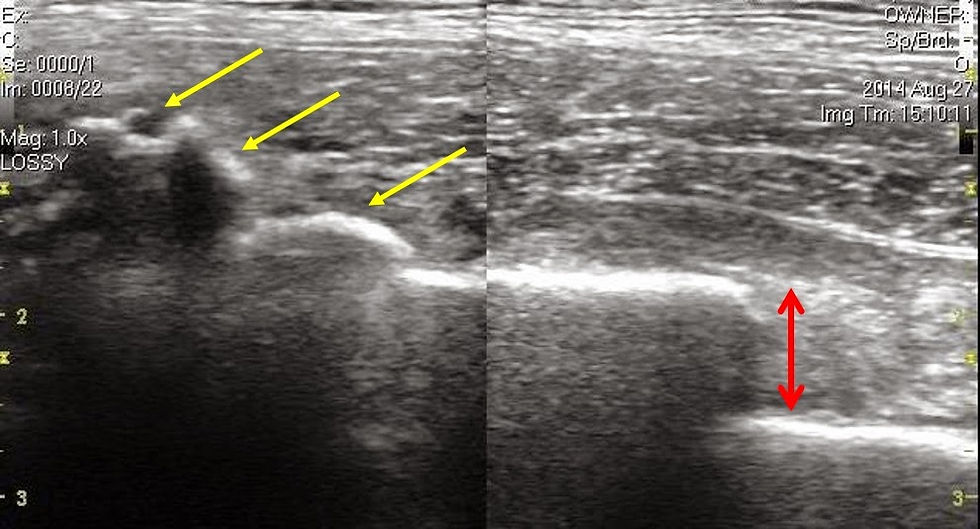Fractured Scapula in a Horse
- Michael Porter
- Nov 2, 2018
- 2 min read
A 5 year-old miniature horse presented to PHD Veterinary services for the complaint of forelimb lameness. The mini had been charged and mounted by a full grown horse 4 weeks prior and subsequently the mini was a grade 4 out 5 lame in the right forelimb at the walk. The referring veterinarian examined the mini on the day of the injury and radiographed the shoulder joint. There were no radiographic abnormalities noted. Although the lameness was slowly resolving, the owner and referring veterinarian elected for an ultrasound of the shoulder region. On presentation, the mini was a grade 3/5 lame in the right forelimb at the walk. There was a firm swelling over the center of the right scapula and the mini was painful to direct pressure. There was no muscle atrophy noted and the ambulation of the limb was normal.

In Figure 1, the spine of the scapula is imaged. The white structures correspond to bone. The yellow arrows point to multiple bone fragments. These ultrasound findings suggest that the spine of the scapula was crushed when the full grown horse mounted the mini. The image in Figure 2 corresponds to an equine scapula and the yellow arrows highlight the spine of the scapula as it extends nearly the length of the scapula. In addition to the bone fragments of the spine of the scapula, the longitudinal scan of the scapula in Figure 3 suggests a fracture of the body of the scapula. There is a "step" or interruption of the bony margin which is indicated by the red arrow in Figure 3.


In Figure 4, the abnormal scapula (left image) is compared to the normal scapula (right image). Clearly, there are multiple bone fragments present at the site of the fractured scapula. The prognosis for this mini is good given time to heal. The mini is developing a firm, bony callous over the fracture site to stabilize the scapula and it's soundness has improved since the injury. It remains possible that the mini may develop a sequestrum (dead bone) due to the multiple bone fragments which would result in a draining wound. In addition, the fracture of the body of the scapula will need significant time to stabilize before the mini can return to full soundness. This type of injury would likely be more serious in a full size horse due to the weight of the horse. In addition, the radial and suprascapular nerves are often involved in these types of injuries resulting in muscle atrophy and difficulty in proper ambulation of the limb.




Comments